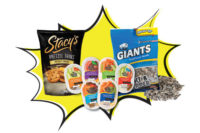It’s nearly impossible to describe the current flaming hoops of cannabis regulations and their nuanced differences across the checkerboard map of U.S. states. Legal, mixed and completely illegal statuses for cannabis products spread from coast to coast, posing a variety of obstacles for those of us designing packaging within the industry. Looking to the future of cannabis packaging, it’s easy to predict an industry with standardized legislation and products lining the shelves of Walgreens.
To find out what’s in store for cannabis packaging by 2025, I delved into the subject with a group of packaging experts. Why 2025 you ask? It’s the year many brands such as Nestlé, Aldi and even Pepsi are targeting for their packaging to be 100% recyclable or reusable, so it’ll be a milestone year for packaging.
Here, three packaging designers creating groundbreaking work in the cannabis space — Jared Mirsky, founder of Wick & Mortar, Canndescent’s Mickey Waite and Ai Hayata of Veritiv — discuss their process and the future of the cannabis market.
How do you see the evolution of cannabis packaging by 2025?
Jared Mirsky, Wick & Mortar: Hopefully much more sustainable and certainly much more standardized. Right now, most legalized states outlaw cannabis recycling programs, creating a major waste issue throughout the industry. We sincerely hope that changes. In the meantime, we’re pushing our clients toward more sustainable packaging options, like glass and biodegradable materials. To be honest, it’s a pretty easy sell because many of our clients already have sustainability in mind.
From a standardization perspective, in five years it’s more than possible, if not likely, that we’ll have national standards for cannabis packaging. Right now, packaging laws are fragmented throughout the country. Each state sets its own rules and guidelines, which is kind of a nightmare for cannabis companies with licenses across multiple states. As this industry continues to thrive and grow, the feds are likely to step in on packaging standards ... even before it’s legalized at the federal level.
Mickey Waite, Canndescent: With all of the compliance changes happening as fast and frequent as they do, it is difficult to predict what cannabis packaging will be allowed to look like in five years, but I really hope cannabis is de-regulated to the point that we can continue being creative. Life with joints in blister packs, like cold meds, will be a tragedy.
Ai Hayata, Veritiv: The cannabis industry is an interesting space. There are many subcultures within the lifestyle, and what was considered taboo is now beginning to emerge into the mainstream culture. It will be interesting to see the smaller artisanal brands that were outside public purview become more commercialized and transition into a more public space. I believe it will be a mix of identity as each brand decides on what part of the spectrum they want their image to be.
What materials are you most excited to implement into packaging not currently in the mainstream?
Mirsky: Utilizing sustainable materials are a priority. Recently, a food delivery service in California, called Model Meals, showed a video of its new delivery packaging material. It’s a Styrofoam that completely melts when submerged in water, and it’s incredible to watch! It’s really heartening to see what “mad scientists” are coming up with to combat plastic use and packaging waste in general. There’s no doubt we’ll put some of these new inventions to good use.
Hayata: The sustainability movement is so exciting. As we speak, R&D departments are discovering algae inks, mushroom trays and zucchini bags. It is remarkable to be a part of the forefront of innovation as we design for a more sustainable future. I’m interested to see how these new materials can help us push the limit and impact the user experience of how the products and package interact. At Veritiv we have a materials team dedicated to uncovering new substrates and seeing what’s on the horizon for the world of packaging beyond cannabis.
Waite: I’m really looking forward to the development of more hemp-based products like hemp papers and biodegradable plastics. There are some on the market that aren’t widely available and the costs not very competitive. I recently did a cost comparison between a traditional paper and a hemp paper on three different structures, and the hemp was two to four times more expensive. Once more farms begin to transition to growing hemp versus other traditional crops, the cost and availability will become more reasonable, and creative companies will be able to produce new and exciting products for designers to fawn over.
How do childproofing regulations impact your design process? How would you choose for these regulations to evolve?
Waite: Current child-resistant regulations are critical to the design process, but when you are servicing multiple states and even other countries, what regulations do you consider and how soon are the next wave of regulations going to drop that you need to factor into your designs? It’s one of the trickiest situations: Do I simplify and get to market fast to capture sales and market share but risk that it may be obsolete in a few months and be forced to adjust things and confuse consumers with ever-changing packaging; or do I over-design, which could add cost and time to make sure the products can be used for the next year or more? I really like to go rogue with my packaging, but when it comes to CR I tend to play it more conservative. Give me an extra month or two, and I can usually create something that will outsell the quick and easy options three to one.
My fear is that the government will overregulate and take all the fun out of the packaging. How often have you seen a pharmaceutical product you were excited to buy? Blah. The hope is that they de-regulate cannabis to the same level as alcohol, then we can do some really creative stuff. Gift sets with swag, accessory packs, collaborations with complimentary products — my mind is doing cartwheels just thinking about it.
Mirsky: Childproofing is a part of regulatory compliance, whether we or our clients like it or not. It’s a guardrail we often must abide by. If not, our clients could face major fines or lose their license to operate. We don’t mess around with that, so we always check local regulations to be sure we’re designing with compliance in mind.
How do we think or want these regulations to evolve? That’s a tough one. We will, of course, always design compliantly because it’s in the best interest of our clients. But here’s one way to put it: Alcohol doesn’t come with childproofing, it comes with an age and ID requirement. And alcohol isn’t listed as having anti-cancer potential on the National Cancer Institute’s website.
Hayata: Childproofing becomes a part of the process by default. Our teams have both designers and engineers that collaborate to ensure each solution isn’t just beautiful by design but structurally sound and test-ready. Having an in-house testing lab allows for optimal results as designs are quickly iterated upon. As childproof designs are developed, a key part to our process is testing and identifying key metrics for successful results.
Personally, I’m excited for the future of packaging, and it’s not that difficult to look to 2025 and see a clear vision of the future. As packaging designers we live for the future, as anything we design today takes months to hit the shelves. Cannabis packaging is the “street style” of the packaging industry: It’s where everyone will begin to look for inspiration and slowly it’ll evolve into the mainstream.
A focus on user experience that embraces childproofing as part of the design challenge to make security the differentiating factor is the next step in cannabis. Packaging designers and agencies servicing cannabis should have access to qualified packaging engineers who can help support your concepts through scientific methods vs look and feel. Sustainability is important today and will only continue to increase its priority status in the next five years. If you’re not considering sustainable packaging today, you’re already being left behind.
As designers, manufacturers, suppliers and anyone tied to the cannabis packaging supply chain, it’s important to have a keen eye toward the future. Forward thinkers help navigate the industry, prepare for hurdles and identify unseen opportunities that set tomorrow’s trends.
One thing is for sure. Ready or not, the future is coming on.







